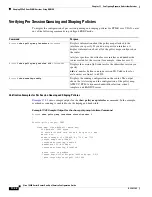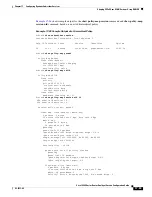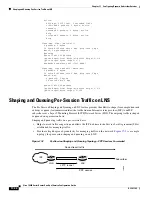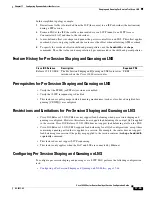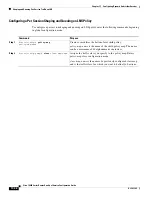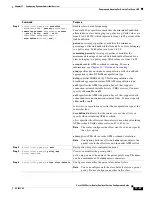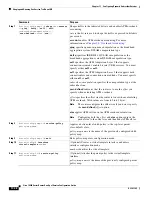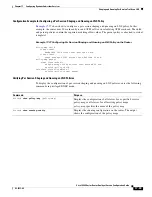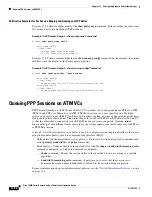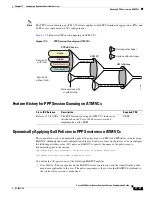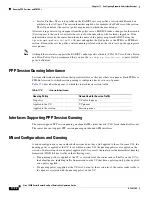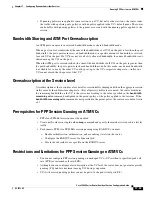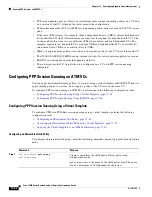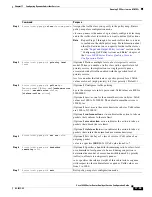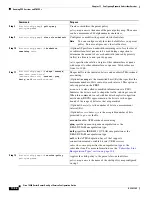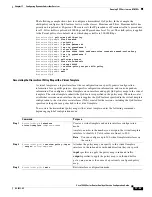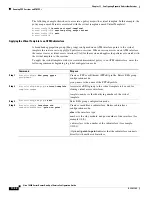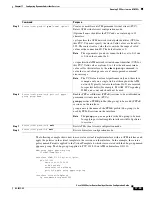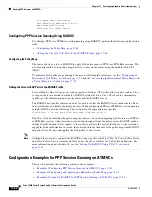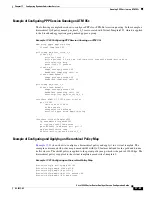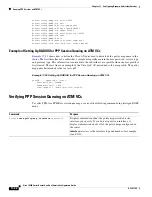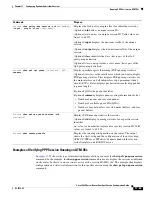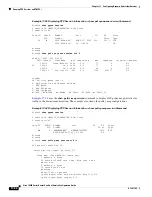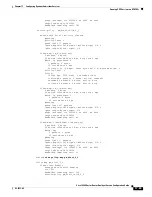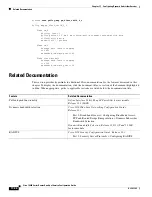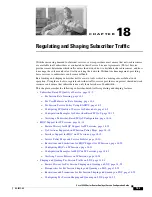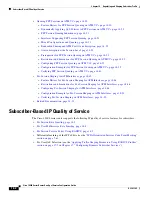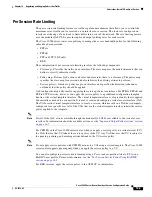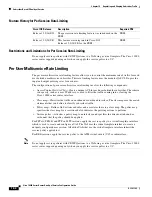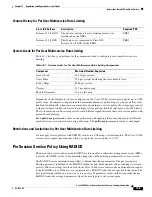
17-56
Cisco 10000 Series Router Quality of Service Configuration Guide
OL-7433-09
Chapter 17 Configuring Dynamic Subscriber Services
Queuing PPP Sessions on ATM VCs
Step 8
Router(config-pmap)#
policy-map
policy-map-name
Creates or modifies the parent policy.
policy-map-name
is the name of the parent policy map. The name
can be a maximum of 40 alphanumeric characters.
Step 9
Router(config-pmap)#
class
class-default
Configures or modifies the parent class-default class.
Note
You can configure only the class-default class in a parent
policy. Do not configure any other traffic class.
Step 10
Router(config-pmap-c)#
bandwidth
remaining
ratio
(Optional) Specifies a bandwidth-remaining ratio for class-level
or subinterface-level queues to be used during congestion to
determine the amount of excess bandwidth (unused by priority
traffic) to allocate to non-priority queues.
ratio
specifies the relative weight of this subinterface or queue
with respect to other subinterfaces or queues. Valid values are
from 1 to 1000.
Step 11
Router(config-pmap-c)#
shape
[
average
]
mean-rate
[
burst-size
]
[
excess-burst-size
] [
account
{
qinq
|
dot1q
}
aal5
subscriber-encap
]
Shapes traffic to the indicated bit rate and enables ATM overhead
accounting.
(Optional)
average
is the committed burst (Bc) that specifies the
maximum number of bits sent out in each interval. This option is
only supported on the PRE3.
mean-rate
is also called committed information rate (CIR).
Indicates the bit rate used to shape the traffic, in bits per second.
When this command is used with backward explicit congestion
notification (BECN) approximation, the bit rate is the upper
bound of the range of bit rates that are permitted.
(Optional)
burst-size
is the number of bits in a measurement
interval (Bc).
(Optional)
excess-burst-size
is the acceptable number of bits
permitted to go over the Be.
account
enables ATM overhead accounting.
qinq
specifies queue-in-queue encapsulation as the
BRAS-DSLAM encapsulation type.
dot1q
specifies IEEE 802.1Q VLAN encapsulation as the
BRAS-DSLAM encapsulation type.
aal5
is the ATM Adaptation Layer 5 that supports
connection-oriented variable bit rate (VBR) services.
subscriber-encaps
specifies the encapsulation type at the
subscriber line. For more information, see the
“Subscriber Line
Encapsulation Types” section on page 10-5
.
Step 12
Router(config-pmap-c)#
service-policy
policy-map-name
Applies the child policy to the parent class-default class.
policy-map-name
is the name of the child policy map configured
in step 1.
Command
Purpose

